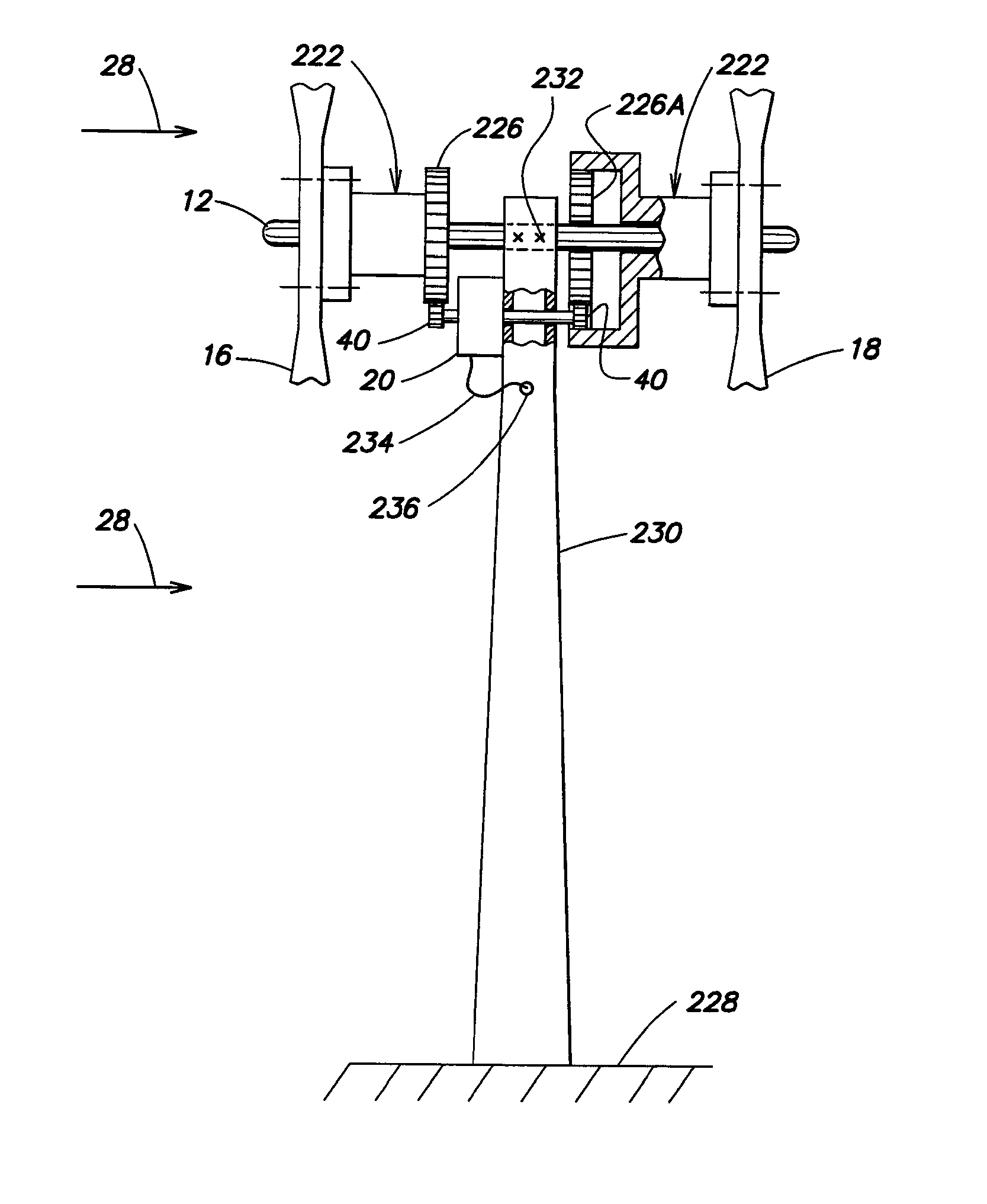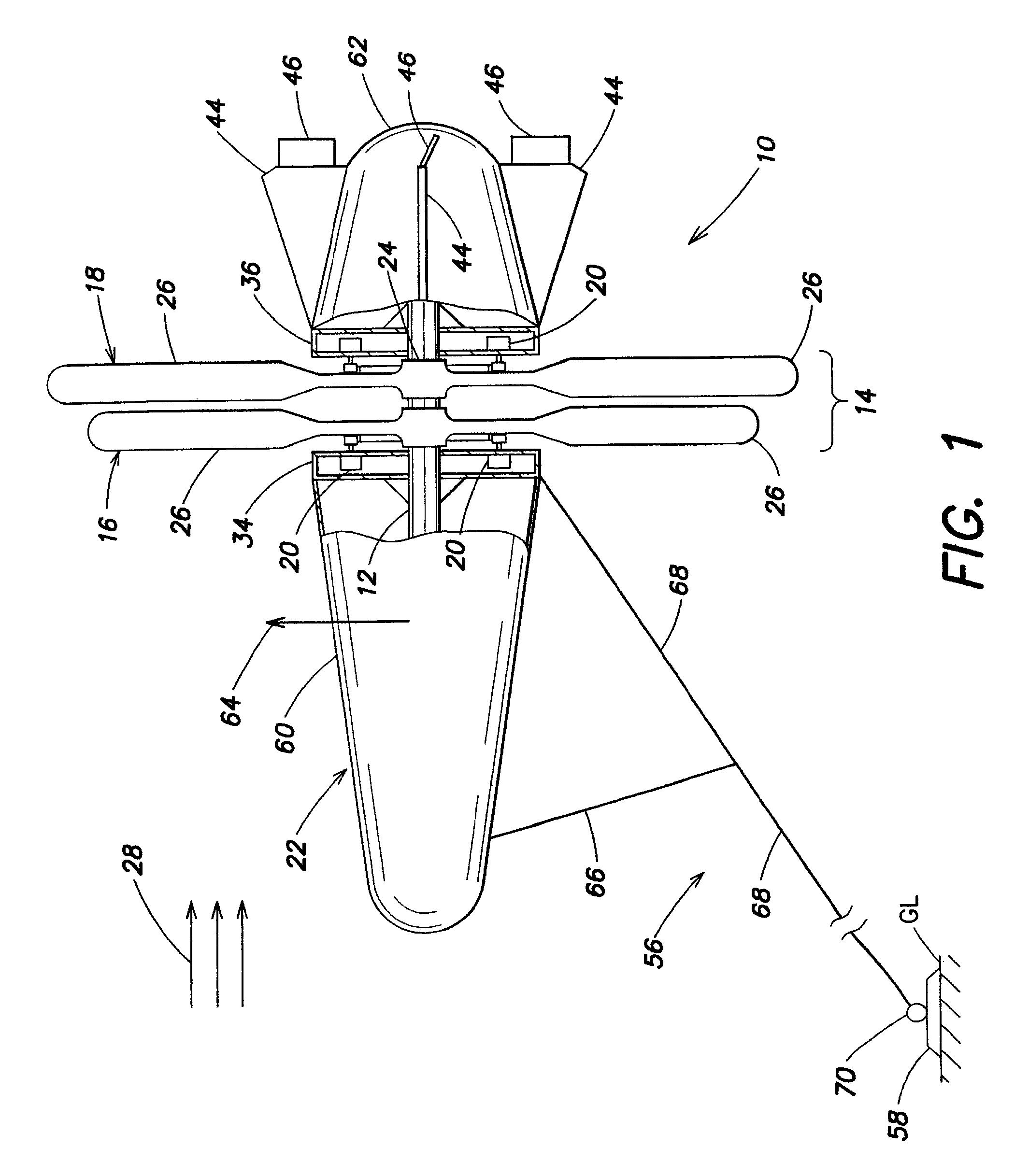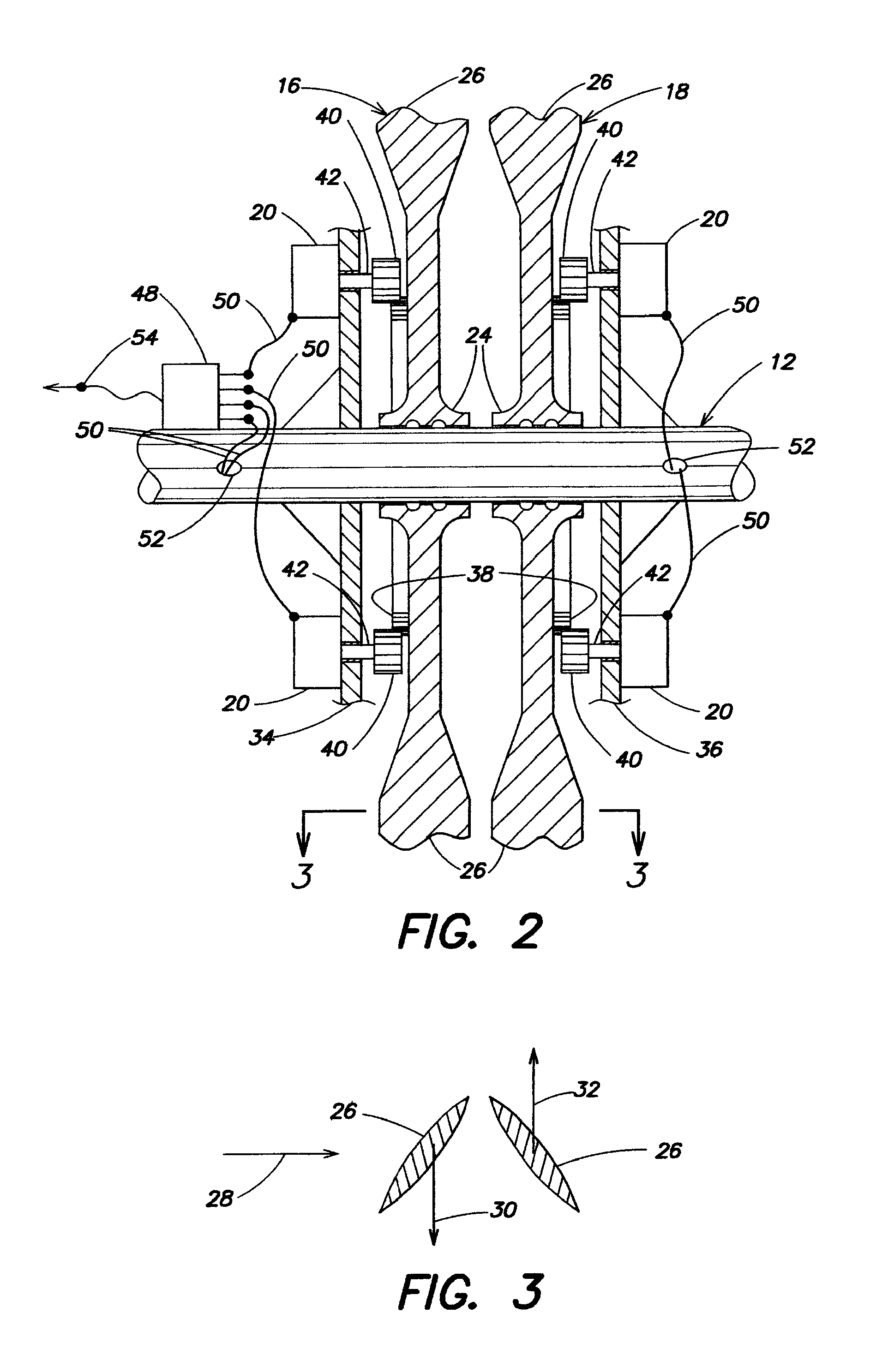Wind turbine electricity generating system
a technology of wind turbines and electricity generation, which is applied in the direction of wind turbines, motors, electrical equipment, etc., can solve the problems of limited land for building the towers to support such wind turbines, and high construction and maintenance costs. , to achieve the effect of high electricity generation capacity, low construction and maintenance costs, and high operational efficiency
- Summary
- Abstract
- Description
- Claims
- Application Information
AI Technical Summary
Benefits of technology
Problems solved by technology
Method used
Image
Examples
first embodiment
[0031]With reference to FIGS. 1-6, an airborne wind turbine system in accordance with the invention is designated generally as 10 and comprises a central shaft 12, a turbine section 14 including a front wind turbine 16 and a rear wind turbine 18 rotatably mounted to the shaft 12, generators 20 which convert rotation of the turbines 16, 18 into electricity, and a lifting structure 22 coupled to the turbine section 14 for generating a lifting force to enable the turbine section 14 to rise into the atmosphere. Although shaft 12 is referred to as a central shaft because it is preferably situated in the axial center of the system 12, it is conceivable that the shaft 12 may be positioned off-center, and thus the centrality of the shaft 12 should not be considered a limiting feature, but rather only a preferred feature.
[0032]Each of the front and rear turbines 16, 18 includes a respective bearing assembly 24 which supports the turbine 16, 18 on the central shaft 12 and a plurality of blade...
second embodiment
[0096]FIG. 11 shows a stationary wind turbine system in accordance with the invention that is designated generally as 240 and differs from the embodiment shown in FIG. 9 in that there is only a single generator 20 mounted to the tower structure 230, and both turbines 16, 18 are coupled to this generator 20 via a mechanical coupling. This mechanical coupling comprises two gears 40 that are fixed to or part of a common shaft 42 of the generator 20. Each gear 40 may be fixed at a respective end region of the shaft 42. The shaft 42 extends through the tower structure 230 and either clearance is provided to avoid contact between the shaft 42 and the tower structure 230 or one or more bearings are interposed between the shaft 42 and the tower structure 230. Rotation of turbine 16 in one direction and rotation of the turbine 18 in the opposite direction cause the same direction of rotation of the shaft 42 (via gears 40 and meshing gears 226, 226A).
[0097]Another advantage of having multiple...
PUM
 Login to View More
Login to View More Abstract
Description
Claims
Application Information
 Login to View More
Login to View More - R&D
- Intellectual Property
- Life Sciences
- Materials
- Tech Scout
- Unparalleled Data Quality
- Higher Quality Content
- 60% Fewer Hallucinations
Browse by: Latest US Patents, China's latest patents, Technical Efficacy Thesaurus, Application Domain, Technology Topic, Popular Technical Reports.
© 2025 PatSnap. All rights reserved.Legal|Privacy policy|Modern Slavery Act Transparency Statement|Sitemap|About US| Contact US: help@patsnap.com



